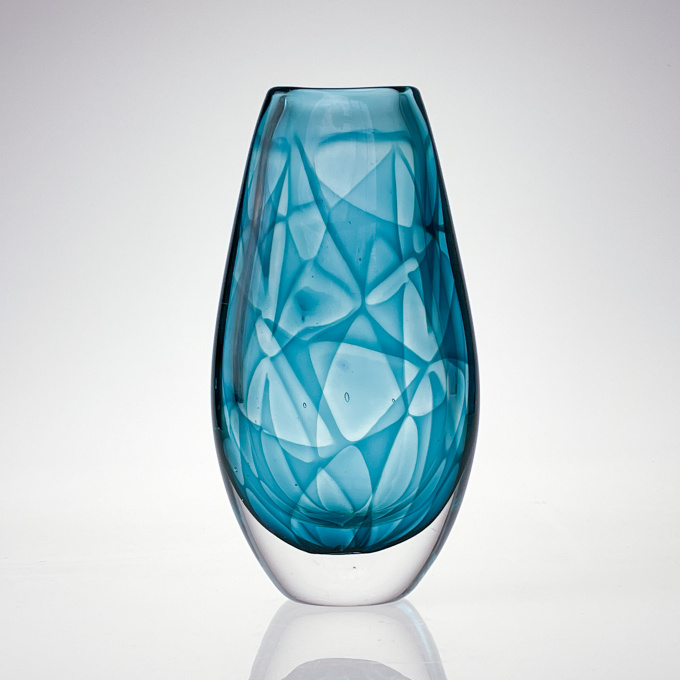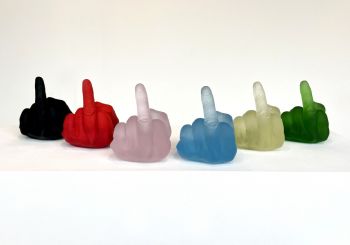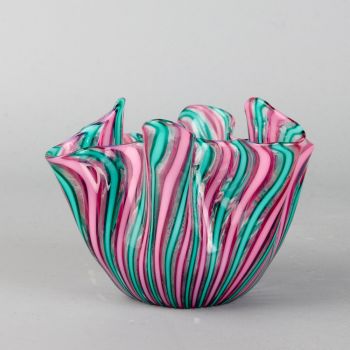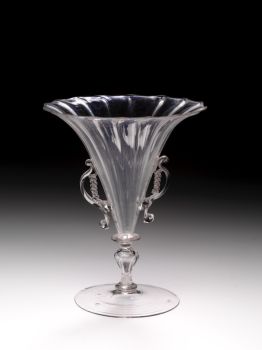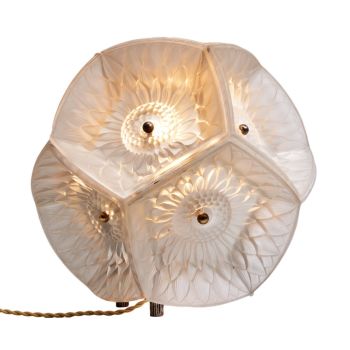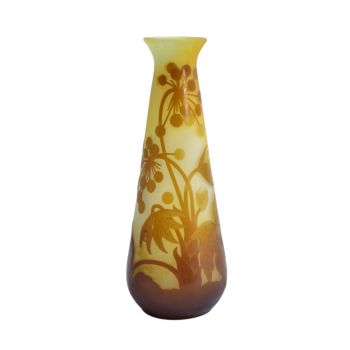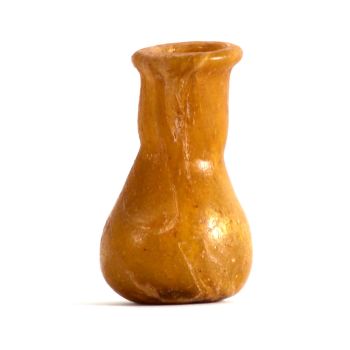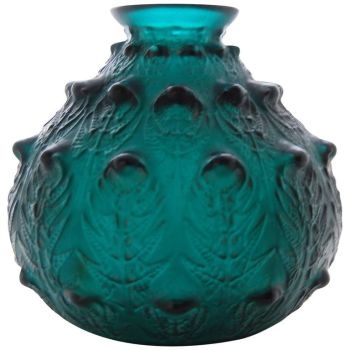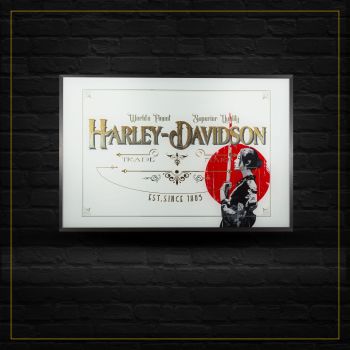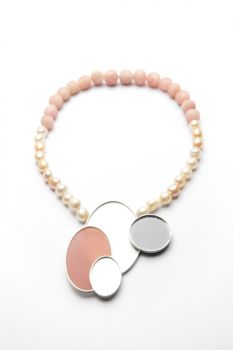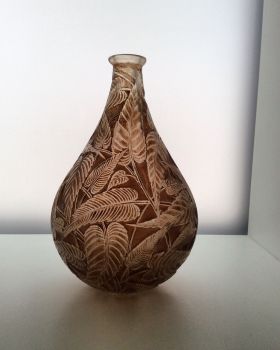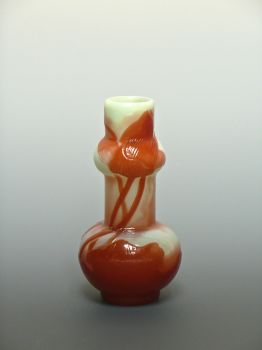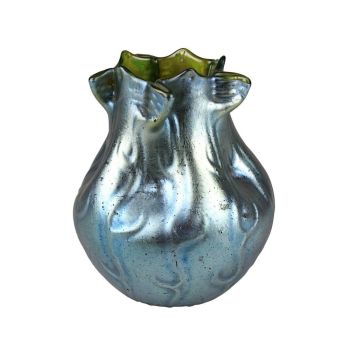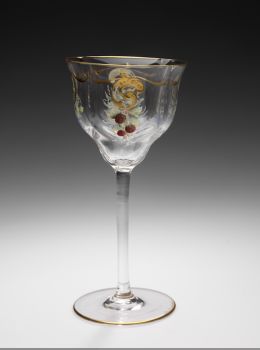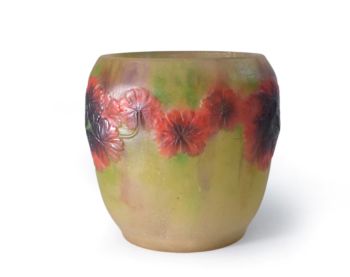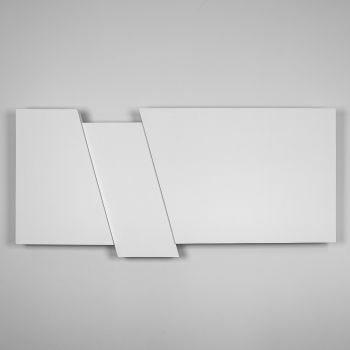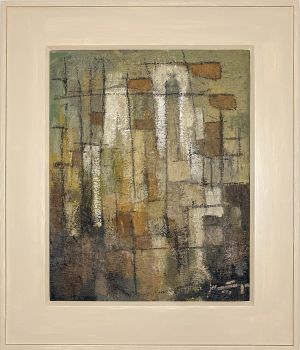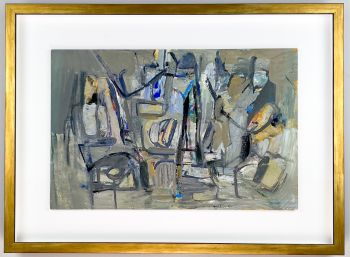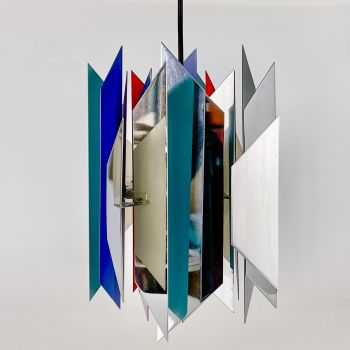Turquoise and clear glass art-object "Colora", model LH 1674 - Kosta Glasbruk, Sweden 1960's 1960 - 1969
Vicke Lindstrand
Bicchiere
26 ⨯ 13 ⨯ 7 cm
ConditionVery good
Attualmente non disponibile tramite Gallerease
Van Kerkhoff Art
- A proposito di opere d'arteA free blown crystal art object / vase "Colora" with encapsulated turquoise-coloured geometric decoration, model LH 1674. Designed by Vicke Lindstrand and executed by the Swedish glass factory Kosta, presumably in the 1960s.
The "Colora" line consisted of two sizes. A large size, model LH 1674 and a smaller size LH 1673 and were designed the Vicke Lindstrand in the late 1950s.
This specimen is the largest model (LH 1674) in good vintage condition. It's either unsigned or the signature (etching) has become illegible. Hence the relatively low price for this very sought after piece.
About Vicke Lindstrand
Vicke (Viktor Emanuel) Lindstrand (Gotheborg, Sweden 1904 - Kosta, Sweden 1983) was a prominent Swedish glass designer and artist.
He received his education at the Technical School for Glass and Ceramics and went on to work as an artistic director at the Swedish glass company Orrefors. Throughout his career, Lindstrand developed a reputation as one of Sweden's most talented glass designers, known for his innovative use of traditional glassblowing techniques and his ability to create pieces that were both aesthetic and functional.
One of Lindstrand's most famous designs is the series of vases that he created for Orrefors in the 1930s. These vases are known for their simple yet elegant shapes, and their use of bright, vibrant colours. They were unlike anything that had been seen before in the glassware industry, and helped to establish Orrefors as a leader in the Scandinavian design movement. Lindstrand's work was highly sought after by collectors and design enthusiasts, and his pieces are still considered to be some of the most important examples of 20th-century Swedish glass design.
Throughout his career, Lindstrand received numerous awards and honors for his work. He was a member of the Royal Academy of Fine Arts in Sweden, and his work was exhibited in museums and galleries around the world.
Condition
This art-object is in good vintage condition, some minor scratches and wear consistent with age and use. No cracks or chips. A few airbubbles in the glassmass. For more information on the condition, please contact us and we can provide a condition report.
Literature
William L. Geary, Scandinavian glass p.58-60
Dimensions
H. 26,2 cm
W. 13,5 cm
D. 7,1 cm
Weight 3060 grams - A proposito di opere artista
Victor Emanuel Lindstrand, noto come Vicke Lindstrand (Göteborg, 27 novembre 1904 – Kosta, 7 maggio 1983), è stato un designer svedese di vetro, designer di tessuti e ceramiche e pittore. È considerato un pioniere dell'arte vetraria svedese. Il suo lavoro faceva parte delle competizioni artistiche alle Olimpiadi estive del 1932 e alle Olimpiadi estive del 1936.
Da bambino, Lindstrand era interessato al disegno. Aveva studiato arte commerciale e lavorato nell'illustrazione commerciale prima di iniziare la sua carriera presso il produttore di vetro Orrefors nel 1928. Ha aperto la strada a progetti di vetro artistico più audaci presso Orrefors e insieme a Edvin Öhrström e Knut Bergqvist ha inventato la tecnica Ariel.
Nel 1950 è entrato a far parte di Kosta Glasbruk come direttore artistico prima del suo ritiro nel 1973. A Kosta, era il designer dominante, prestando il suo nome a molti design ormai classici. A questo punto, Lindstrand ha iniziato a iniettare sempre più colore nelle sue creazioni, che hanno portato a design iconici come Trees in the Fog e Autumn.
Ha trascorso gli ultimi 10 anni della sua vita come artista freelance lavorando con Hanne Dreutler e Arthur Zirrnsack allo Studio Glashyttan di Åhus.
Fece il suo debutto come designer alla Fiera mondiale di Stoccolma nel 1930, dove presentò dodici vasi di vetro con decori a smalto in motivi esotici. Per questo ha ricevuto grande attenzione dalle pubblicazioni di design internazionali.
Lindstrand ha aggiunto nuove dimensioni artistiche al già famoso vetro Orrefors con i suoi design unici e la rivitalizzazione di forme e tecniche classiche. Durante la sua permanenza a Orrefors ha lavorato su vetri incisi e vasi Graal. Con lo scultore Edvin Öhrström ha sviluppato la nuova tecnica Ariel (così chiamata dalla moglie attrice Kristina).
Orrefors non poteva permettersi di mantenere Lindstrand durante la guerra e tra il 1943 e il 1950 divenne leader creativo a Uppsala Ekeby, dove disegnò molti oggetti in gres diversi che vanno dai vasi alle sculture figurali.
Sei interessato ad acquistare questa opera d'arte?
Artwork details
Related artworks
- 1 - 4 / 24
Amalric Walter
Amalric Walter & Henri Bergé – Crabe plumier1920 - 1929
Prezzo su richiestaAntiques Emporium
Demetre Chiparus
Demetre H. Chiparus – Bronze Art Deco statue “Rapture” – Édition Etling, Paris1920 - 1929
Prezzo su richiestaAntiques Emporium
1 - 4 / 24Artista Sconosciuto
Verre ailé vénitien1550 - 1599
Prezzo su richiestaPeter Korf de Gidts - Antiquairs
Artista Sconosciuto
Gobelet vénitien ailé1650 - 1700
Prezzo su richiestaPeter Korf de Gidts - Antiquairs
René Lalique
Un rarissimo vaso "Fougeres" verde intenso disegnato da R. Lalique1912
€ 8.950Lennart Booij Fine Art and Rare Items
 A cura di
A cura diSilla Scheepens
1 - 4 / 24- 1 - 4 / 12

